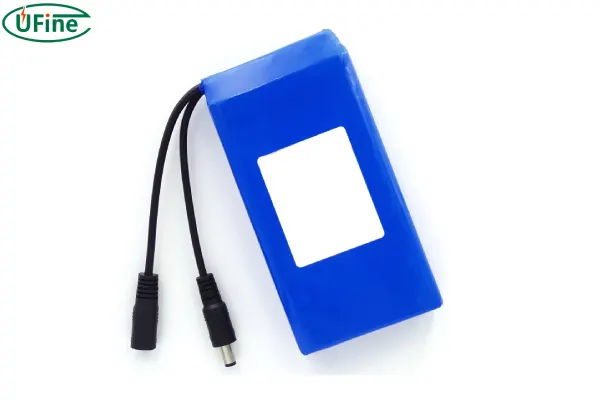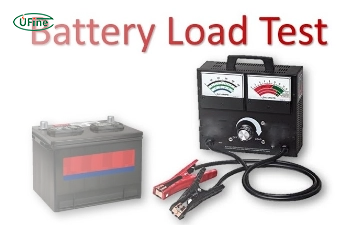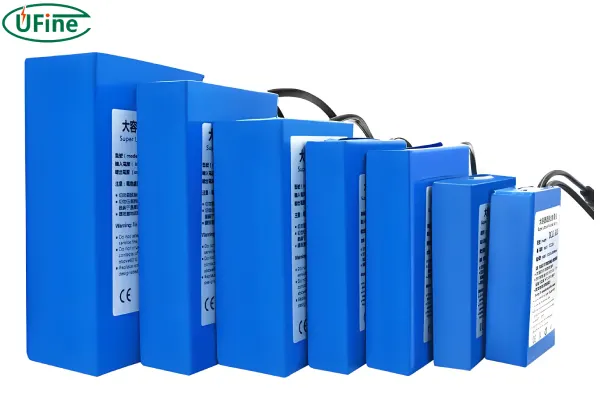
- Part 1. What are 12V rechargeable cells?
- Part 2. Benefits of using 12V rechargeable cells
- Part 3. Types of 12V rechargeable cells
- Part 4. Comparing 12V rechargeable cell types
- Part 5. How to choose the right 12V rechargeable cell
- Part 6. Maintaining your 12V rechargeable cells
- Part 7. Applications of 12V rechargeable cells
- Part 8. Conclusion
When it comes to portable power solutions, 12V rechargeable cells are incredibly popular due to their versatility and efficiency. These batteries power a wide array of devices and systems, from small gadgets to large-scale energy solutions. Let’s dive deeper into what makes 12V rechargeable cells so essential, explore their benefits and types, and how to choose the best one for your needs.
Part 1. What are 12V rechargeable cells?

So, what exactly are 12V rechargeable cells? Simply put, they are batteries designed to deliver 12 volts of power and can be recharged multiple times. Unlike disposable batteries, which you throw away after a single use, these rechargeable cells can go through many charge-discharge cycles. This makes them both cost-effective and eco-friendly. You’ll find them in automotive applications, solar power systems, and various portable electronics.
Part 2. Benefits of using 12V rechargeable cells
Why are 12V rechargeable cells so popular? There are several reasons why these batteries are a go-to choice for many applications:
- Cost-Effective: Sure, they might be more expensive upfront compared to disposable batteries. But because you can recharge and reuse them, you end up saving money in the long run.
- Environmentally Friendly: By using rechargeable batteries, you significantly reduce the number of disposable batteries that end up in landfills. That’s a big win for the planet!
- Reliable Power: They provide a stable voltage output, which ensures consistent performance for your devices.
- Versatility: Whether you need to power small electronics or support larger systems like RVs and solar setups, 12V rechargeable cells have got you covered.
Part 3. Types of 12V rechargeable cells
Now, let’s talk about the different types of 12V rechargeable cells you can choose from. Each type has its own set of advantages and disadvantages, so it’s important to understand the differences.
1. Lead-acid batteries
Lead-acid batteries are one of the oldest types of rechargeable batteries, but they’re still widely used today.
Advantages:
- Durability: These batteries can handle harsh conditions and heavy usage, making them ideal for automotive and industrial applications.
- Cost: Generally, they are cheaper than other types of rechargeable batteries.
Disadvantages:
- Weight: Lead-acid batteries are quite heavy, which can be a drawback for portable applications.
- Maintenance: They require regular maintenance to ensure they last a long time.
2. Lithium-Ion Batteries
Lithium-ion batteries are newer compared to lead-acid batteries and have quickly become very popular.
Advantages:
- Lightweight: They are much lighter than lead-acid batteries, making them perfect for portable devices.
- Efficiency: They have a high energy density, which means they can store more energy in a smaller space.
Disadvantages:
- Cost: They are more expensive upfront compared to lead-acid batteries.
- Sensitivity: They need a proper battery management system to prevent issues like overcharging and overheating.
3. Nickel-Metal Hydride (NiMH) Batteries
NiMH batteries are another option for those looking for 12V rechargeable cells.
Advantages:
- Capacity: They offer a good energy capacity, making them a reliable choice for many applications.
- Safety: NiMH batteries are less prone to overheating and other safety issues compared to lithium-ion batteries.
Disadvantages:
- Memory Effect: If not properly discharged before recharging, they can suffer from a memory effect, which reduces their capacity over time.
- Self-Discharge: They have a higher self-discharge rate compared to lithium-ion batteries, meaning they lose charge faster when not in use.
Part 4. Comparing 12V rechargeable cell types
To help you decide which type of 12V rechargeable cell is right for you, here’s a handy comparison of the key characteristics:
| Feature | Flooded Lead-Acid (FLA) | Absorbent Glass Mat (AGM) | Gel Cell | Lithium Iron Phosphate (LiFePO4) |
|---|---|---|---|---|
| Maintenance | High – Requires regular water top-up | Low – Maintenance-free | Low – Maintenance-free | Very Low – Maintenance-free |
| Cycle Life | 300-500 cycles | 500-1000 cycles | 500-1000 cycles | 2000-5000 cycles |
| Weight | Heavy | Heavy | Heavy | Lightweight |
| Energy Density | Low | Medium | Medium | High |
| Discharge Rate | High self-discharge rate | Low self-discharge rate | Low self-discharge rate | Very low self-discharge rate |
| Depth of Discharge (DoD) | 50% | 50-80% | 50-80% | 80-100% |
| Cost | Low – Cheapest option | Medium – More expensive than FLA | High – More expensive than AGM | High – Most expensive upfront |
| Charge Time | Slow | Moderate | Slow | Fast |
| Temperature Sensitivity | Moderate | Low | High – Sensitive to high temperatures | Very low – Performs well in extremes |
| Safety | Risk of spilling acid, can release gases | Safe – Sealed and spill-proof | Safe – Sealed and spill-proof | Very safe – No risk of spills or gases |
| Usage Applications | Automotive, backup power | Marine, RVs, backup power | Deep cycle applications, renewable energy | High-performance applications, deep cycle |
| Environmental Impact | High – Contains toxic lead and acid | Lower than FLA but still contains lead | Lower than FLA but still contains lead | Low – No toxic heavy metals |
| Charging Efficiency | Low – Inefficient charging | Medium – More efficient than FLA | Medium – Similar to AGM | High – Highly efficient |
| Shelf Life | Short – Needs regular use/maintenance | Long – Can sit unused longer without damage | Long – Better than FLA, similar to AGM | Very long – Can sit unused for extended periods |
Summary:
- Flooded Lead-Acid (FLA): Cheapest and traditional, but high maintenance and lower cycle life.
- Absorbent Glass Mat (AGM): Better performance and lower maintenance than FLA, with moderate cost.
- Gel Cell: Similar to AGM with good safety, but sensitive to high temperatures and slower charge time.
- Lithium Iron Phosphate (LiFePO4): Best overall performance, low maintenance, and longest cycle life, but with the highest upfront cost.
Part 5. How to choose the right 12V rechargeable cell
Choosing the right 12V rechargeable cell depends on several factors. Here’s what you should consider:
- Application Needs: Think about what you need the battery for. If it’s for high-drain applications, lithium-ion might be your best bet. Lead-acid batteries are great for less frequent, heavy-duty use.
- Budget: While lithium-ion batteries are costlier upfront, their longer lifespan and efficiency can offer better value over time. Lead-acid batteries are cheaper initially but might cost more in the long run due to maintenance.
- Portability: If you need a battery that’s easy to carry, lithium-ion batteries are the way to go. They’re lightweight and compact.
- Maintenance: Consider how much time and effort you can dedicate to battery maintenance. Lead-acid batteries require regular upkeep, while lithium-ion and NiMH batteries are more hands-off.
Part 6. Maintaining your 12V rechargeable cells
To get the most out of your 12V rechargeable cells, proper maintenance is key. Here are some tips to help you out:
- Regular Charging: Avoid letting the battery discharge completely. Regularly charging it helps maintain its health.
- Proper Storage: Store batteries in a cool, dry place. Extreme temperatures can degrade their performance.
- Usage: Use the battery regularly. Prolonged periods of inactivity can lead to capacity loss.
- Safety Measures: For lithium-ion batteries, ensure they are not overcharged or overheated. Use a suitable battery management system.
- Cleaning: Keep battery terminals clean to ensure good contact and efficiency.
Part 7. Applications of 12V rechargeable cells
12V rechargeable cells are incredibly versatile and used in a wide range of applications. Here are some common uses:
- Automotive: Powers vehicles’ electrical systems and supports engine start-up.
- Solar Power Systems: Stores energy generated from solar panels for use during non-sunny periods.
- RVs and Marine: Provides power for appliances and systems in recreational vehicles and boats.
- Portable Electronics: Used in devices like cameras, handheld tools, and more.
- Backup Power: Essential for uninterruptible power supplies (UPS) to provide backup during power outages.
Part 8. Conclusion
12V rechargeable cells play a crucial role in many of our modern devices and systems. Their versatility, cost-effectiveness, and environmental benefits make them an excellent choice for various applications. By understanding the different types, their benefits, and how to maintain them, you can ensure you choose the right battery for your needs and keep it in top condition for years to come.
Related Tags:
More Articles

Battery Load Test: A Comprehensive Guide
Step-by-step battery load test guide for car, solar & industrial use. Learn how to load test a battery, interpret voltage charts, and avoid common mistakes.
The Comprehensive Guide to Battery Balancing and Battery Balancer
Discover how battery balancers improve lithium battery performance, lifespan, and safety. Learn types, functions, and tips to choose the right balancer.
What Is the Best Voltage for a Chainsaw Battery?
Compare 12V-80V chainsaw batteries for light pruning, medium firewood, and professional cutting. See best battery chainsaw with runtime charts and safety tips.
Lithium VS. Alkaline Batteries: A Comprehensive Comparison
Lithium batteries last 3–7× longer than alkaline and perform better in cold weather. Compare lifespan, cost, safety, and best uses to choose the right battery.
Comparing Lithium-Sulfur and Lithium-Ion Batteries: Which is Right for You?
Compare lithium-sulfur (Li-S) and lithium-ion batteries on energy, lifespan, cost, safety, and applications. Best choice for drones, EVs, and electronics.



